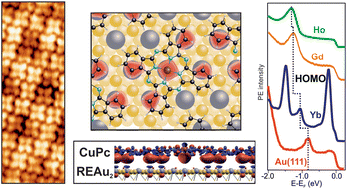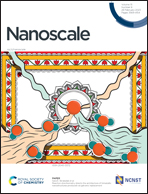Tuning the carrier injection barrier of hybrid metal–organic interfaces on rare earth-gold surface compounds†
Abstract
Magnetic hybrid metal–organic interfaces possess a great potential in areas such as organic spintronics and quantum information processing. However, tuning their carrier injection barriers on-demand is fundamental for the implementation in technological devices. We have prepared hybrid metal–organic interfaces by the adsorption of copper phthalocyanine CuPc on REAu2 surfaces (RE = Gd, Ho and Yb) and studied their growth, electrostatics and electronic structure. CuPc exhibits a long-range commensurability and a vacuum level pinning of the molecular energy levels. We observe a significant effect of the RE valence of the substrate on the carrier injection barrier of the hybrid metal–organic interface. CuPc adsorbed on trivalent RE-based surfaces (HoAu2 and GdAu2) exhibits molecular level energies that may allow injection carriers significantly closer to an ambipolar injection behavior than in the divalent case (YbAu2).



 Please wait while we load your content...
Please wait while we load your content...